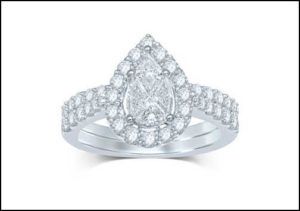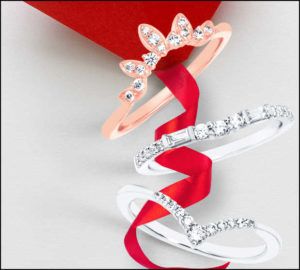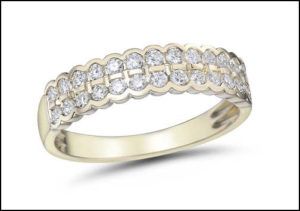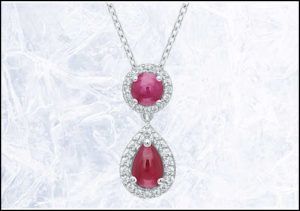Record Sales for 2021, Continued Growth in 2022,
& Challenges to Meet
2021 has been a good year for the Jewelry Business
Holiday retail sales during November and December are expected to grow 8.5% to 10.5% over 2020 to between $843 billion and $859 billion, forecasts the National Retail Federation (NRF). Even at the low end of its forecast, that would be both the largest growth rate – topping last year’s impressive 8.2% – and largest total amount – beating 2020’s $777 billion – on record.
Regarding annual retail sales for 2021, year over year, NRF forecasted in late June growth between 10.5% and 13.5% to more than $4.44 trillion this year, as the economy accelerates its pace of recovery.
Spending has continued at a brisk pace throughout 2021 – up 14.5% year-over-year for the first nine months – and has returned to pre-pandemic levels for many retail categories. While some individuals who lost jobs last year still face financial difficulty, data tracked by Harvard University shows spending by low-income consumers was up 22% at the end of September compared with pre-pandemic January 2020. The number appears to reflect enhanced unemployment benefits and other stimulus money, such as the new child tax credit.
The strong growth in income and savings should help spending overcome inflation that has been driven both by consumer demand and supply chain disruptions, says NRF Chief Economist Jack Kleinhenz. “Consumers are in a favorable position going into the last months of the year, and spending because they can. The challenge when and if sales begin to fall will be whether the drop is caused by weaker demand or reduced product availability.”
The wedding category is expected to receive a major shot post COVID, as a record number of couples are looking to tie the knot in 2022. Hailed the year of the wedding, 2.5 million couples are expected to tie the knot in 2022, following a two-year lull when 1.3 married in 2020 and 1.9 million in 2021, finds The Wedding Report. This number surpasses the previous record set in 1984 of 2.49 million marriages in the USA.
2021 Year of Redemption
2021 has been a good year for the jewelry business. “People have an overwhelming desire to get back with friends and family, that’s the psyche of the country right now. Customers are eager to show their loved ones how much they care, and jewelry is the perfect way to send that sentiment,” cheers Theresa Namie, merchandise manager for Ostbye. She says Ostbye has surpassed both 2020 and 2019 sales, with 2021 redemption for so many in the jewelry industry.
Michael Lerche, president/COO of Goldstar Jewellery expects jewelry products in all categories will do well this holiday season. “The holidays for jewelry will continue to be very strong,” he believes, noting that engagement/wedding and anniversary jewelry sales have been robust. Moreover, men’s diamond rings, and body jewelry have seen significant growth this year.”
Classic styles with a twist prevail. Namie credits Ostbye’s success to its focus on creating designs that have broad-based consumer appeal. “We have programs for anniversary bands and birthstones that are tried and true and continue to be that way. We added new chevron style birthstone bands that are great for more than just birthstone rings, like creating a unique color look or styled as a wedding band. We introduced our ‘Enhanceables’ pendants that can be worn three different ways, and reversible earrings that have been well received.”
Overcoming Challenges
Natalie Kotlyar, national managing partner for the global accounting firm BDO, told Forbes in a recent article written by luxury market analyst Pam Danziger: “Retail is facing a trifecta of challenges that are not going to be easily or quickly resolved. You have supply chain issues. You have employment concerns and hanging overall is inflation. None of these are short-term issues.” Kotlyar expects supply-chain shortfalls to carry over through next year’s holiday season.
Vendors are prepared for 2022 Valentine’s Day, and for those that can order now, Namie says, it’s a win-win to have that inventory during the holidays with carry-over into Valentine’s Day. Sean McCormick, sales and marketing for Novell Global, advocates retailers order three months earlier than usual.
Lerche concurs that sales have been “way up over 2020, even up double digits over 2019.” But he acknowledges supply challenges, for many things from findings to diamonds, and pricing has been affected. “There are many delays in shipping as well. Diamond prices have surged while many retailers have not accepted the raise, so margins have been affected.”
The supply chain is impacted by a labor shortage, as vendors agree that staffing is a problem. “Finding, and/or keeping qualified craftsmen and office staff have been difficult throughout the year,” says McCormick.
Opportunities in 2022
The global luxury market is estimated to return to pre-pandemic levels by 2022, according to the 2021 True-Luxury Global Consumer Insight Report by Boston Consulting Group and the Altagamma Foundation. Among the main drivers of growth, cites the report, have been U.S. consumers, who started luxury purchases more quickly than expected thanks to strong government stimulus.
The desire for luxury will increase in the post-COVID world, finds the report, with Millennials and Gen Z, who will account for 60% of total consumers by 2025, looking to the future with optimism.
Among the major trends the report cites is the increasing virtualization of luxury (new digital tools for engaging the consumer), an omnichannel distribution system and seamless online-offline experience, and growing attention to the values of brands, most notably environmental sustainability and inclusiveness.
“The impact of technology and how the digital age has been a powerful tool for consumers in the jewelry buying process has changed how we as a community have been doing business for so long,” says Sagar Manilal, who manages sales for Indigo Jewelry, and recently shared diamond trends in a podcast for The Plumb Club. “Compelling technology is available for retailers like custom design tools, holograms of what renderings would like finished, and virtual try-on.”
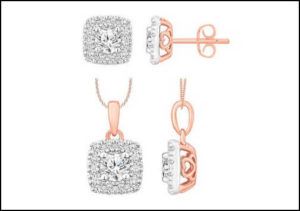 Manilal cites The Knot statistic that the use of smart phones for online wedding planning activities have increased by 41% for browsing research on engagement rings, for example, which highlights the digital footprint for consumers.
Manilal cites The Knot statistic that the use of smart phones for online wedding planning activities have increased by 41% for browsing research on engagement rings, for example, which highlights the digital footprint for consumers.
Moreover, manufacturers find today’s consumers, driven by Millennials and Gen Z seek out sustainability and transparency in the brands from which they buy. Original Designs Inc. (ODI), for example is reaching a younger demographic with its latest Greenland Ruby collection, set with Greenlandic rubies and pink sapphires with natural diamonds in gold or silver, comes with a guarantee of the gems’ origin and journey to market. A portion of sales goes to the Greenland Ruby’s Pink Polar Bear Foundation, focused on supporting international polar research and the impact of climate change on the inhabitants of Greenland.
The quest for sustainable products also has attracted consumers, especially Gens Y and Z, to lab-grown diamonds and gemstones, finds Cora Lee Colaizzi, marketing director for Quality Gold. “Consumers have a real appreciation for the technology. They love the fact that in seven to 20 days 1-carat can be created in the correct conditions versus millions of years in the earth.” But she says for most, it comes down to size and quality. “Couples have a budget and aspirations, and when compared to a mined stone, lab-grown gives them an option.”
Consumers have a new appreciation and desire for more choices in the jewelry they wear, with contemporary metals benefitting from this trend and poised for significant growth for independent jewelers, shared John Skaret, vice president of sales, Frederick Goldman, Inc., Independent Division, in a recent podcast for The Plumb Club.
In addition to being a popular wedding band metal choice for 50% of grooms, Skaret has seen a rise in men looking for contemporary metal bands for fashion and expects this category to grow. “The men’s jewelry category, as a whole has exploded in the last three to five years. We’re seeing men wearing jewelry as an expression of themselves, fashion item, status symbol, and more.”
Maximize Resources
Namie advocates retailers utilize the resources their vendors provide, including marketing material, photography and videos, website usage, and more.
“We continually study the market and designs to meet the needs across the country, so the retailers don’t have to do all the work,” Namie says. “Partnering with companies that can do this for you can really help you to be successful.”
Namie also encourages jewelers to tap into the rich information the trade shares on a regular basis. “Attend industry webinars, and listen to podcasts, as are found on The Plumb Club website. There’s a lot of good resources available.”
